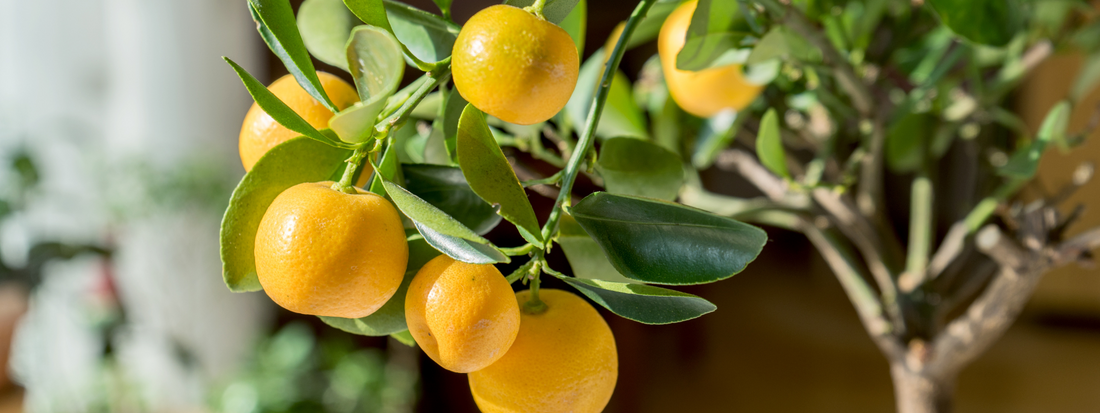
Choosing the Best Tree to Grow from a Pot Plant
Growing a tree in a pot is an excellent way to bring nature into your home, patio, or balcony. Potted trees not only add beauty and greenery to your space but also allow for flexibility—you can move them to sunnier spots or bring them indoors during extreme weather. However, selecting the right tree for a pot requires careful consideration to ensure it thrives in its contained environment.
Why Choose a Tree for a Pot?
Trees grown in pots offer several benefits, including:
-
Space-Saving: Ideal for small gardens, courtyards, or balconies.
-
Portability: Easy to reposition for optimal light or seasonal changes.
-
Controlled Growth: Pots naturally limit the size of the tree, reducing the need for frequent pruning.
-
Decorative Appeal: Adds a focal point to outdoor or indoor spaces, enhancing the overall aesthetic.
Factors to Consider When Choosing a Potted Tree
1. Size and Growth Habit
Choose a tree species that stays compact or has a slow growth rate. Fast-growing or large species may outgrow their containers quickly, leading to root problems and poor health.
-
Look for dwarf or compact varieties specifically bred for pots.
-
Opt for trees that grow less than 3 meters tall when mature if you’re working with limited space.
2. Root System
Trees with non-invasive, fibrous root systems are better suited for pots as they adapt well to confined spaces. Avoid species with aggressive or spreading roots.
3. Light and Climate Needs
Consider the amount of sunlight your space receives and choose a tree that thrives in those conditions. Also, ensure the tree is suitable for your local climate, especially if you plan to keep it outdoors year-round.
4. Pot Selection
The pot itself is crucial for the tree’s success:
-
Size: The pot should be large enough to accommodate the tree’s roots with room for growth.
-
Material: Choose durable materials like terracotta, ceramic, or plastic that suit your style and climate.
-
Drainage: Ensure the pot has proper drainage holes to prevent waterlogging, which can damage roots.
5. Maintenance Requirements
Some trees require more care than others. Consider how much time and effort you’re willing to invest in watering, pruning, and feeding your tree.
Top Trees for Growing in Pots
1. Citrus Trees
-
Why They’re Great: Citrus trees, like lemons, limes, and oranges, thrive in pots and provide the added bonus of fragrant blossoms and edible fruit.
-
Care Tips: Place them in a sunny spot and ensure they have well-draining soil. Protect them from frost during colder months.
2. Olive Trees
-
Why They’re Great: Drought-tolerant and hardy, olive trees add a Mediterranean charm to any space.
-
Care Tips: Provide full sun and water sparingly, allowing the soil to dry out between waterings.
3. Japanese Maple (Acer palmatum)
-
Why They’re Great: With their stunning foliage and compact size, Japanese maples are perfect for pots.
-
Care Tips: Place in a spot with dappled sunlight and protect from harsh winds. Use well-draining soil and water consistently.
4. Fig Trees (Ficus carica)
-
Why They’re Great: Fig trees are adaptable and produce delicious fruit in the right conditions.
-
Care Tips: Choose a sunny location and keep the soil consistently moist but not waterlogged.
5. Bay Trees (Laurus nobilis)
-
Why They’re Great: A culinary favorite, bay trees are evergreen and easy to shape, making them ideal for decorative purposes.
-
Care Tips: Provide partial to full sunlight and water moderately. Prune regularly to maintain shape.
6. Dwarf Conifers
-
Why They’re Great: These trees are low-maintenance and offer year-round greenery. Perfect for small spaces.
-
Care Tips: Ensure they get plenty of sunlight and well-draining soil. Water sparingly.
How to Care for a Potted Tree
-
Watering: Potted trees dry out faster than those planted in the ground. Check soil moisture regularly and water deeply when the top layer feels dry.
-
Feeding: Use a slow-release fertilizer or a balanced liquid feed during the growing season to provide essential nutrients.
-
Pruning: Regularly prune your tree to maintain its size and shape. Remove any dead or diseased branches.
-
Repotting: Trees may outgrow their pots over time. Repot every 2-3 years or when roots become pot-bound, using fresh soil and a slightly larger container.
-
Winter Protection: For trees that aren’t frost-hardy, move the pot to a sheltered location or wrap it with insulating material during cold months.
Conclusion
Growing a tree in a pot is a rewarding way to enhance your space with greenery and even enjoy homegrown fruit or culinary herbs. By carefully selecting the right tree and providing proper care, you can create a thriving potted tree that adds beauty and functionality to your home or garden. Start small, be patient, and watch your potted tree transform your space into a natural oasis!
